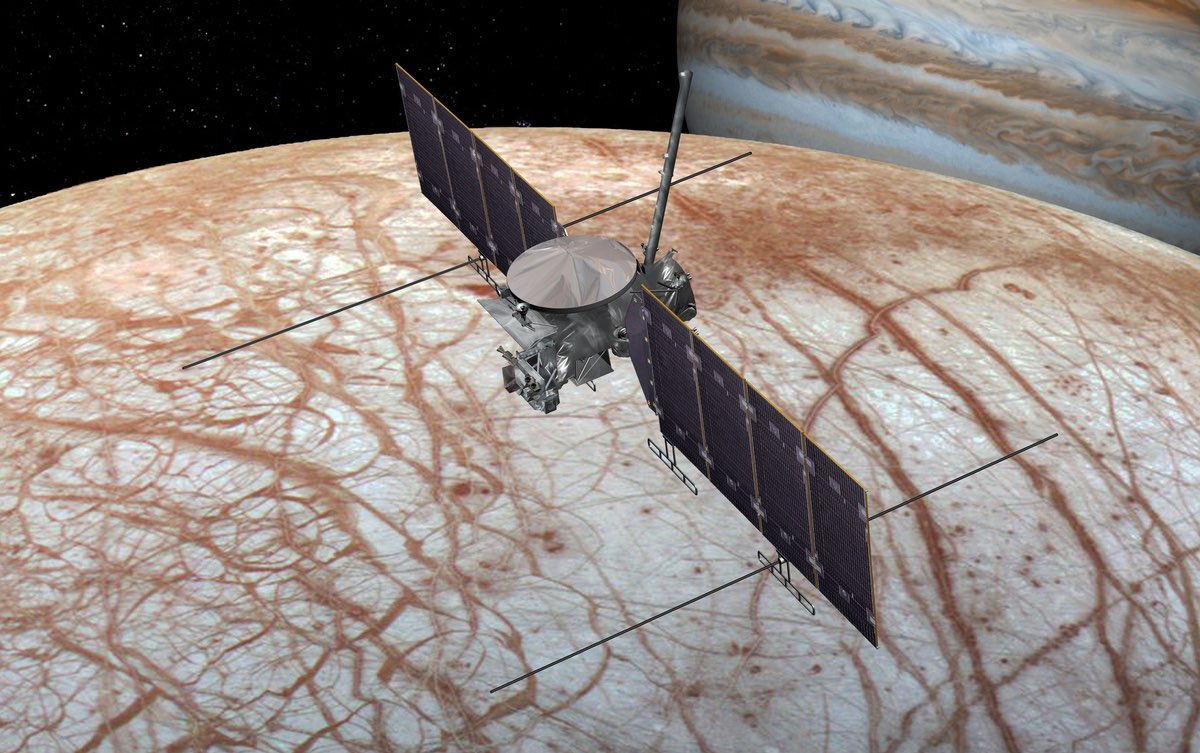WASHINGTON — The White House is asking Congress to remove language from an appropriations bill that would direct NASA to launch the Europa Clipper mission on the Space Launch System as a long-running dispute on how to launch the mission nears its conclusion.
In a Nov. 30 letter to Sen. Richard Shelby (R-Ala.), chairman of the Senate Appropriations Committee, Russell Vought, director of the White House Office of Management and Budget (OMB), discussed issues his office had with a series of fiscal year 2021 spending bills Shelby’s committee released Nov. 10. Those bills were intended to serve as the starting point in negotiations with the House, which passed its version of those bills in the summer.
Those Senate bills included a commerce, justice and science spending bill that provides NASA with $23.5 billion in 2021. The bill included language found in previous years’ bills, but not the House version for 2021, that NASA “shall use the Space Launch System as the launch vehicle for the Jupiter Europa Clipper mission.”
“The Administration is disappointed that the bill would require NASA to use the Space Launch System (SLS) rocket to launch the Europa Clipper mission,” Vought wrote in his letter to Shelby. “This would increase costs for the Clipper mission and deprive the lunar exploration effort of a rocket NASA needs for human exploration of the Moon.”
In the last few years, NASA has sought launching Europa Clipper on a commercial launch vehicle, like the Falcon Heavy, rather than the SLS. The agency argued that it needed initial SLS vehicles for its Artemis lunar exploration program, and that using a commercial alternative could save up to $1.5 billion.
The House provided some relief to NASA in its spending bill in July. “The Committee believes that the Clipper mission should use a vehicle to support a launch to reduce overall mission costs and complexity and expedite science results in concert with the decadal survey,” House appropriators stated in a report accompanying their spending bill.
Senate appropriators didn’t explain why they retained the SLS language in their bill. They took an unorthodox approach to the fiscal year 2021 spending bills, holding no subcommittee or full committee markups of legislation, instead releasing drafts more than a month after the 2021 fiscal year started Oct. 1.
From a technical standpoint, SLS has long been the preferred choice for Europa Clipper, since it allows the spacecraft to fly to Jupiter on a direct trajectory, arriving less than three years after launch. Alternative vehicles would instead rely on gravity assist flybys to get Europa Clipper, adding years to the travel time.
However, agency officials said in August they were studying “potential hardware compatibility issues” between the Europa Clipper spacecraft and the SLS. NASA did not elaborate on those problems, but said that “special hardware adjustments” may be needed to address them.
Potential changes to the Artemis program could address one problem about using SLS for launching Europa Clipper. While the incoming Biden administration has not talked about space policy, campaign statements such as the Democratic Party platform released this summer suggest it may at least slow the pace of returning humans to the moon, eliminating the 2024 goal established by the Trump administration. That could free up an SLS vehicle for a Europa Clipper launch in 2024, the mission’s current launch readiness date.
House and Senate appropriators are in negotiations on a final set of 2021 spending bills. The federal government is currently operating under a continuing resolution that expires Dec. 11.
Whatever language in in that final bill could mark the end of a years-long debate on how to launch Europa Clipper. Project officials said this summer that they want to make a final decision on the launch vehicle by the time of the mission’s critical design review, scheduled for December. Postponing that decision would increase the mission’s costs as they continue to support analyses for both SLS and a commercial alternative.
The OMB letter criticizes other aspects of the Senate legislation regarding NASA, including the $1 billion provided for the Human Landing System program, far short of the $3.2 billion requested to keep a 2024 landing on schedule. The letter also noted the “under-funding” of NASA’s low Earth orbit (LEO) commercialization efforts, which received only $15 million in the Senate bill versus the $150 million in the agency’s request. That reduced funding, the letter warned, “risks leaving the Nation without a presence in LEO when the International Space Station is eventually retired.”
However, OMB praised the Senate for providing $11.8 million for the Office of Space Commerce within the Department of Commerce. The administration sought $15 million for the office in its 2021 request, far above the $2.3 million it received in 2020, in order to implement Space Policy Directive 3 regarding space traffic management. The House did provide any additional money for the office, stating that it was waiting for a report by the National Academy of Public Administration on which agency should lead civil space traffic management work. That report, released in August, endorsed the Commerce Department as the lead agency for that activity.
“The Administration looks forward to continued engagement with the Congress as these efforts progress and it continues to urge the Congress to support the transfer of the Office of Space Commerce from the National Oceanic and Atmospheric Administration (NOAA) to the Office of the Secretary,” the OMB letter stated.
